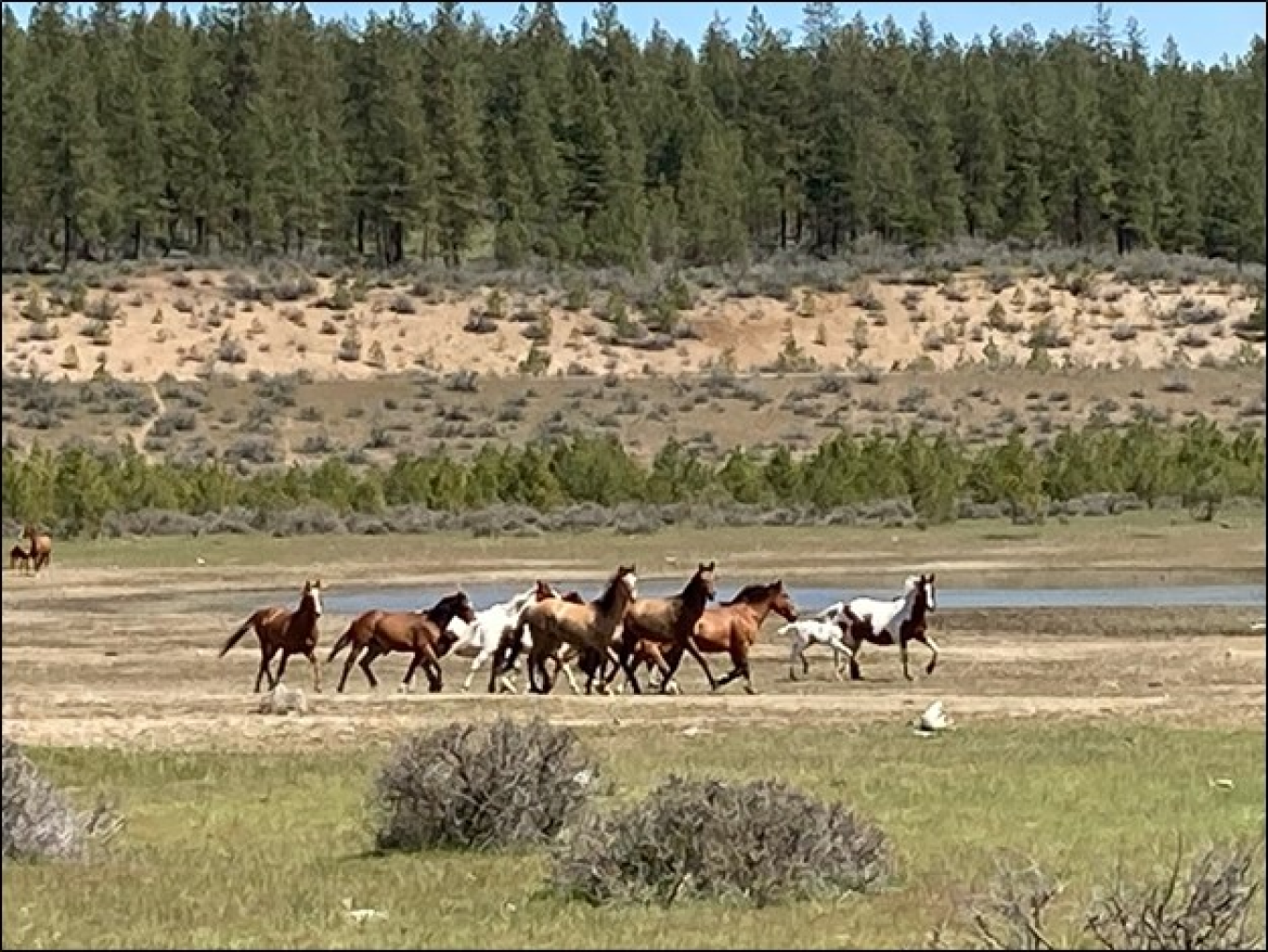Wild horses couldn’t keep LM’s team from an unforgettable site visit in the Pacific Northwest.
July 1, 2022
On what had been a gloomy morning, the clouds began to part over the rolling hills of an Eastern Washington valley. A deep rumbling intensified in the distance, and if not for the clearing skies, the group of explorers traversing the landscape could have mistaken it for thunder. When they turned expecting lightning, they witnessed a different force of nature – like a scene from a Western, no fewer than 20 wild horses tore out from the hills, roaring past and leaving the awestruck observers’ jaws dropped.
For the members of the Department of Energy (DOE)’s Office of Legacy Management (LM) team visiting LM’s Sherwood Disposal Site that day in early May, seeing horses in the wild had a deeper meaning. LM is the organization responsible for long-term stewardship of former nuclear sites that supported the nation’s defense during the Cold War. On the land LM oversees, thriving flora and fauna are a sign of success. Wild horses are an even bigger endorsement.
“We may have grown accustomed to a virtual world over the last few years, but there is no substitute for visiting our sites and seeing firsthand the impacts of our work on nature and communities,” said LM Education, Communication, History, and Outreach (ECHO) supervisor David Von Behren.
The band of horses was headed to a nearby watering hole during a site tour led by LM Site Manager Ken Kreie. He was accompanied by several colleagues from LM including Program Office Director Carmelo Melendez, Von Behren and two members of the Spokane Tribe.
“It was the right time in the right place with the right people,” said Kreie.
Watching the horses seek relief from the sun in the naturally forming pond – one they share with other animals – and finding shade underneath the Ponderosa pines, it was hard to imagine that a uranium mill tailings site once occupied the same land.
Kreie emphasized the key role that the Spokane Tribe has been played in the remediation of LM’s Sherwood site – attending site inspections and sampling events and keeping LM attuned to fire restrictions and hunting seasons, for example. “Over the last few years, we’ve been able to cultivate a mutual relationship built on trust and the sharing of knowledge,” Kreie said.
“We’re responsible for the land, but the Spokane people actually live with it,” Kreie said. “That’s why we keep an open-door policy – notifying the tribe of any site visits or inspections. Communication is the most important part of the relationship.”
The group toured LM’s Sherwood Disposal Site to assess progress on issues such as erosion, fire management, and long-term collaboration with the Spokane Tribe. They also visited the Ford Site, which will come under LM’s purview in about four years.
The Spokane Tribe is already involved in conversations about the Ford Site, Kreie said, particularly given its position along Chamokane Creek, a sacred body of water for the tribe.
“Observing how the environment has healed at the Sherwood site was awe-inspiring, and it set an optimistic tone for the work we are planning at the Ford site,” he said.
A great deal of preparation goes into handover preparation, Von Behren said, and the Ford site is just one of 20 that LM will inherit in the next five years.
The LM team’s visit to the Ford site included meetings with the Washington State Environmental Health Staff and Dawn Mining Company staff to discuss the issues the organization might face when it takes over the Ford site. “We consult with government organizations, county officials, tribes and other stakeholders to identify things like appropriate cleanup levels, risk tolerance, and our topline goals for the site,” Kreie said.
The trip to Eastern Washington demonstrated that LM’s stewardship work begins long before it takes over a site and does not stop once the land has been proven safe, Melendez said. “From the time we are introduced to a site we will handle to when that site can support thriving plant and animal populations, and even long after LM is there – planning, monitoring, and building relationships.”

